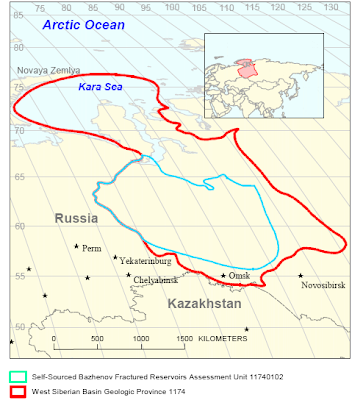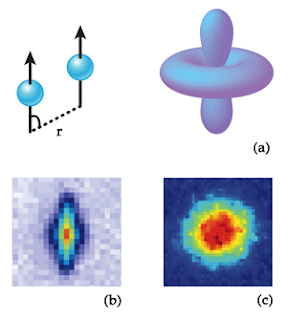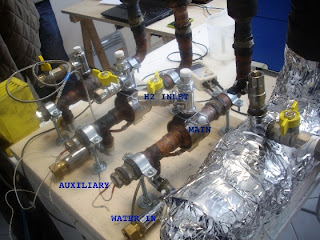Click here to read this mailing online.
|
SpaceX flight opens door for U.S. military payloadsThe recent successful Spacex test flight means they can start working off a $1.6 billion contract with NASA to fly cargo to the space station. It also clears a key hurdle for SpaceX to compete for Department of Defense business as well, which would mean launching military satellites.
Flying three times successfully was among the criteria the company needed to meet to become eligible to compete for military business under a new program designed to draw competition into a field now monopolized by United Launch Alliance, a partnership of Boeing and Lockheed Martin. Read more » Mars One backed by Reality TV Big Brother CreatorDaily Mail UK - The Dutch company Mars One is backed by Big Brother co-creator Paul Romer, as well as Nobel Prize-winning physicist Gerard 't Hooft. With Romer involved, it's no surprise that the company wants to publicize its astronaut-selection and training process as a "media event."
Mars One claims that a new crew of four will join every two years as the explorers build their settlement, and that by 2033 there will be 20 people living on Mars. Mars One claims that a new crew of four will join every two years as the explorers build their settlement, and that by 2033 there will be 20 people living on Mars Read more » Every Black Hole Contains a New UniverseOur universe may exist inside a black hole. This may sound strange, but it could actually be the best explanation of how the universe began, and what we observe today. It's a theory that has been explored over the past few decades by a small group of physicists.
The Big Bang and inflation theories leave major questions unresolved. For example: What started the big bang? What caused inflation to end? What is the source of the mysterious dark energy that is apparently causing the universe to speed up its expansion? The idea that our universe is entirely contained within a black hole provides answers to these problems and many more. It eliminates the notion of physically impossible singularities in our universe. And it draws upon two central theories (general relativity and quantum mechanics) in physics. At the center of spiral galaxy M81 is a supermassive black hole about 70 million times more massive than our sun. Image credit: NASA/CXC/Wisconsin/D.Pooley & CfA/A.Zezas;NASA/ESA/CfA/A.Zezas; NASA/JPL-Caltech/CfA/J.Huchra et al.; NASA/JPL-Caltech/CfA Read more » Bazhenov-Neocomian oil formation covers 80 times the land area of the Bakken in the US and CanadaForbes - another oil shale play that dwarfs the Bakken. It’s called The Bazhenov. It’s in Western Siberia, in Russia. And while the Bakken is big, the Bazhenov — according to a report last week by Sanford Bernstein’s lead international oil analyst Oswald Clint — “covers 2.3 million square kilometers or 570 million acres, which is the size of Texas and the Gulf of Mexico combined.” This is 80 times bigger than the Bakken.
Bazhenov-Neocomian oil formation This unconventional assessment unit includes fractured Bazhenov siliceous shales, which are also source rocks for these reservoirs. The shales cover most of the basin, but their productivity has been demonstrated mainly in the Greater Salym area. In-place resources of oil are apparently very large, but the ability of the reservoir rocks to produce varies greatly and is poorly understood. There is much similarity between this unit and the Bakken play of the Williston basin. The West Siberian basin is the largest petroleum basin in the world covering an area of about 2.2 million km 2. Previous estimates for Western Siberian oil were 144 to 350 billion barrel. This is from the oil that leaked out of the Bazhenov oil formation. There is also over a thousand trillion cubic feet of natural gas in the formation. Russia already produces about 10 million barrels of oil per day, putting it about a million barrels a day ahead of Saudi Arabia, the largest producer in the Middle East. Russia’s emerging shale oil play hasn’t escaped the attention of Robert Johnston, director, energy and natural resources at New York-based Eurasia Group, a geopolitical consulting firm. Johnston was in Edmonton recently to talk about global oil markets and the issues facing oilsands producers. There will be no political or environmental factors to block development of the Russian oil and gas resources. Those concerned about the climate and air and water pollution effects oil and natural gas will have to hope for development of some other energy breakthrough as the economics and political interests are in line for this to be developed. Only radically cheaper nuclear fission, new nuclear fusion or some other lower cost energy will shift development from this energy. Read more » Canada will have 35 million people in 2013 and could have 40 million in 2023 and 50 million in 2042Canada has just published a completed 2010 census and has projected population out to 2060.
Canada will have 35 million people in 2013 and could have 40 million in 2023 and 50 million in 2042. The low growth scenario is to have 40 million in 2042 and the mid-growth scenario is to have 45 million in 2040. Canada could catch up to the population of Spain in 2042 and Germany in 2060. Germany population is projected to fall by quite a bit. Read more » Laser-cooled quantum gas are simultaneously superfluids and crystals which enable cryogenic atom chip microscopesLast week a Stanford team announced in Physical Review Letters that it has created the world's first dipolar quantum fermionic gas from the metal dysprosium – "an entirely new form of quantum matter," as Stanford applied physics Professor and lead author Benjamin Lev put it – represents a major step toward understanding the behavior of these systems of particles. And this understanding makes for a leap toward the supernatural-seeming applications that condensed-matter physics conjures.
* The quantum matter are simultaneously superfluids and crystals. * The work presents an exciting opportunity to study a large spectrum of phases that have been predicted to occur in strongly dipolar quantum gases. * The researchers have already begun developing a microscope to make use of the dipolar quantum fluid's unique characteristics. Their "cryogenic atom chip microscope" is a magnetic probe that should measure magnetic fields with unprecedented sensitivity and resolution. This kind of probe may even allow for a more stable form of quantum computation that uses exotic quantum matter to process information, known as a topologically protected quantum computer. * Beyond these applications, the study offers physicists another line of attack toward understanding unconventional quantum effects. Physics Viewpoint - Quantum Dipolar Gases in Boson or Fermion Flavor Arxiv - Quantum degenerate dipolar Fermi gas (6 pages) At extremely low temperatures, the properties of an atomic gas of bosons (atoms with integer spin) are dramatically different from those of a gas of fermions (atoms with half-integer spin). A confined gas of bosons can be cooled into a Bose-Einstein condensate (BEC), where all of the atoms fall into the same quantum mechanical state to form a macroscopic matter-wave. Fermionic atoms, however, avoid each other. At very low temperatures, a trapped gas of these atoms forms a Fermi sea, where the atoms fill the allowed energy levels of the gas up to the so-called Fermi level. Although the low-temperature states of boson and fermion gases result from purely quantum statistical effects, interactions between the atoms can lead to collective behavior, like superfluidity. Dipolar interactions in a quantum gas of bosons or fermions. (a) The interaction between two particles with large dipole moments has a characteristic d-wave symmetry. (b) In a Bose-Einstein condensate, this interaction causes the gas to implode with a similar d-wave symmetry, as shown here for a gas of erbium-168. (c) In comparison, a quantum gas of fermions is stable, as shown for dysprosium-161. Physical Review Letters - Quantum Degenerate Dipolar Fermi Gas Read more » Hybrid Silicon Nanocone-Polymer Solar CellsNanoletters - Hybrid Silicon Nanocone−Polymer Solar Cells (6 pages)
Recently, hybrid Si/organic solar cells have been studied for low-cost Si photovoltaic devices because the Schottky junction between the Si and organic material can be formed by solution processes at a low temperature. In this study, we demonstrate a hybrid solar cell composed of Si nanocones and conductive polymer. The optimal nanocone structure with an aspect ratio (height/diameter of a nanocone) less than two allowed for conformal polymer surface coverage via spin-coating while also providing both excellent antireflection and light trapping properties. The uniform heterojunction over the nanocones with enhanced light absorption resulted in a power conversion efficiency above 11%. Based on our simulation study, the optimal nanocone structures for a 10 μm thick Si solar cell can achieve a short-circuit current density, up to 39.1 mA/cm2, which is very close to the theoretical limit. With very thin material and inexpensive processing, hybrid Si nanocone/polymer solar cells are promising as an economically viable alternative energy solution. Read more » Quantum dot graphene photodetector is a billion times more sensitive and Graphene bolometer out performs commercial silicon bolometers by 100,000 times1. ZDNet - Researchers working at the Institute of Photonic Sciences (ICFO) in Barcelona have built a super-sensitive photodetector by combining graphene with semiconducting quantum dots that outperforms other graphene based devices by a billion times.
This is a follow up on an article from the middle of May. Speaking to PhysicsWorld , lead researcher Gerasimos Konstantatos explains: “We managed to successfully combine graphene with semiconducting nanocrystals to create complete new functionalities in terms of light sensing and light conversion to electricity."Nature Nanotechnology - Hybrid graphene–quantum dot phototransistors with ultrahigh gain Graphene is an attractive material for optoelectronics1 and photodetection applications because it offers a broad spectral bandwidth and fast response times. However, weak light absorption and the absence of a gain mechanism that can generate multiple charge carriers from one incident photon have limited the responsivity of graphene-based photodetectors to ~10−2 A W−1. Here, we demonstrate a gain of ~10^8 electrons per photon and a responsivity of ~10^7 A W−1 in a hybrid photodetector that consists of monolayer or bilayer graphene covered with a thin film of colloidal quantum dots. Strong and tunable light absorption in the quantum-dot layer creates electric charges that are transferred to the graphene, where they recirculate many times due to the high charge mobility of graphene and long trapped-charge lifetimes in the quantum-dot layer. The device, with a specific detectivity of 7 × 10^13 Jones, benefits from gate-tunable sensitivity and speed, spectral selectivity from the short-wavelength infrared to the visible, and compatibility with current circuit technologies. Read more » Will Facebook become the next Yahoo ?Seekingalpha - Facebook's stock is currently burdened with billions of shares poised to be released from lockup in 2012. There are 1.7 billion shares of Facebook currently locked up. 271 million shares will be available for sale in 74 days. A majority of shares, 1.2 billion, will be released from lockup in mid-November. A small portion of shares are scheduled to be released from lockup past the end of the year. The release of shares from lock up prior to the end of the year is important due to the fact that capital gains tax rates are expected to rise in 2013. I believe this is why the IPO was scheduled for May. Zuckerberg has maximized profits on the IPO at every turn.
Facebook is currently trading at $26.44 per share with a market cap of $56.6 billion. Facebook had a private valuation of $50 billion since January 2011 Read more » Rossi claims 40 days of continuous operation for a 10 kilowatt Energy Catalyzer at 600 degrees celsiusEcat World - Andrea Rossi stated in the email that the new high temperature E-Cat — that can produce 600 degree steam with a COP of 6 — has been operating continuously for 40 days.
The Rossi work is super-controversial and most people believe he is a fraud. With 600C steam high efficiency turbines, Stirling engines, and even thermal photovoltaic systems can be used to produce electricity from E-Cats. This test has lasted so far for 960 (nine hundred and sixty) hours, and is planned to last at least 90 days. Continuous operation for 90 days under constant video surveillance and some public viewing generating 10 kilowatts of thermal power and providing over 3 kilowatts of electricity would be pretty conclusive and very, very simple to prove. There are still some undisclosed issues that are still being worked upon. It would seem that this should either be a product / service by the end of 2013 at the latest or the fraud claims would be proven. New E-Cat Details This test is being conducted with a new model of E-Cat. The test is using a single module that contains a single reactor core. The reactor core is rated to have an output of 10 kilowatts, and a maximum safe output of 20 kilowatts. We have previously been told this reactor core is smaller than the previous version, but uses more shielding. Instead of many grams of nickel, it only uses 1.5 grams. Instead of a hydrogen canister, a small tablet is placed into the reactor that absorbs and releases hydrogen depending on the temperature. Picture from January 2011 demonstration This is following up on the Rossi and Focardi energy production device, which was demonstrated in January 2011. Read more » Growth Sustainability of the BRIC, Mexico, Korea, Turkey and IndonesiaJim O’Neill (Goldman Sachs coiner of the BRIC term) argues that fears of a China hard landing are misplaced and that the Chinese economy is more likely to see a “softer” landing.
While it now looks as though Q2 real GDP growth will be weaker than Q1’s “disappointing” 8.1 pct, our proprietary leading indicators have turned upwards in the past couple of months. It is quite clear that Chinese financial conditions are starting to ease. Brazil is certainly facing more genuine challenges in its effort to achieve the growth rate that satisfies our criteria for BRIC status. We are assuming Brazil will grow by a bit more than 5 pct this decade. It got offto a very good start by virtue of its exceptionally strong performance in 2010. However, the second half2011 and the first quarter of 2012 have clearly disappointed. India was described as “the most disappointing of them all". Russia still has a lot of strength. He also includes Mexico, Korea, Turkey and Indonesia in a Growth 8 group as the most important sources of global growth for the next decade. 
Read more » Rosatom signs international nuclear dealsNigeria signed a cooperation accord with Russia towards the construction of its first nuclear power plant today at the AtomExpo event in Moscow. Bangladesh also furthered its work with Russia and South African officials were in attendance.
In 2010 Nigeria said it aimed to have 1000 MWe of nuclear generation in place by 2019 with another 4000 MWe online by 2030. Increasing power production is a major priority in order to end the unreliability of power supply that millions of people suffer, while adding non-fossil generation also would allow Nigeria to capitalise on exports of liquified natural gas. Read more » How Many Hubble Class or Better Spy Satellites does the US have ?It was revealed today that NASA was given two better than Hubble-class space telescopes that were extra spy satellites. So how many Hubble or better spy satellite space telescopes ?
Strategy Page - details about the Keyhole Spy satellites were leaked or accidentally revealed over the last two decades. About 15 KH-11 Hubble class spy satellites were launched but only four are left. Global Security - ADVANCED CRYSTAL / IKON - Often called ADVANCED CRYSTAL or more recent third, fourth and fifth generations called IKON. In fact “KH-11 KENNON” no longer exists and was replaced by the nuclear war, laser, and battle hardened ADVANCED CRYSTAL imaging spacecraft now the more recent third and fourth generations called IKON. There also appear to be about five KH-12 spy satellites with 2.9 to 3.1 meter mirrors (larger than the Hubble and KH-11 2.4 meter mirrors). So there should be at least 9 Hubble Class or better US spy satellites and there were 11 others that were launched but then had their orbits decay after many years of usage. The IMPROVED CRYSTAL’s sophisticated electronics provides sharper images than the KH-11, comparable in quality to the best of the film return satellites, with a resolution approaching ten centimeters. Read more » More Recent Articles
|












